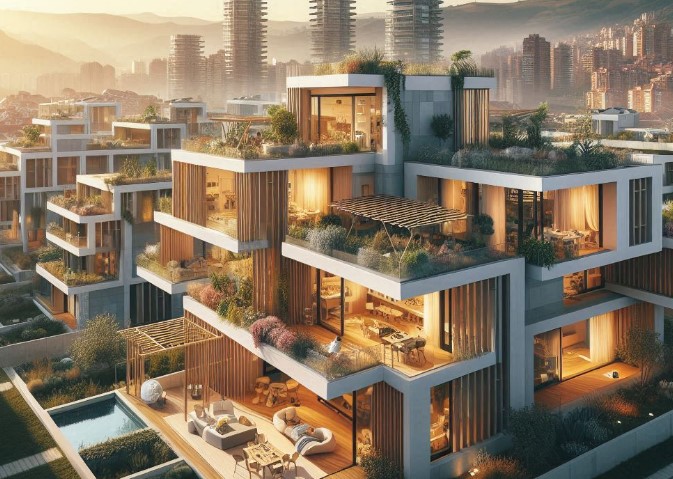Energy saving has become a central priority for advanced societies in recent years. Faced with limited fossil fuels, more and more citizens are investing in the energy efficiency of their homes, whether through solar thermal systems, photovoltaics, or aerothermal systems. However, one housing model stands out by maximizing efficiency and enabling year-round comfort with minimal energy consumption: the Passive House. This innovative concept promises to reduce energy costs by up to 90%.
What is a Passive House? Definition and Benefits
The term Passive House was officially introduced in Germany in 1988 to certify a specific standard in residential construction. The Organization of Consumers and Users (OCU) explains: “A Passive House is a type of house that does not need to consume external energy to regulate its climate or ventilate it because it efficiently utilizes the natural resources of its environment.” This means that these buildings are designed to minimize their energy demand through passive measures such as optimal insulation, airtightness, and heat recovery.
Before constructing a Passive House, a comprehensive site analysis is carried out. Solar radiation, orientation, ventilation, and humidity of the plot are thoroughly examined to optimally adapt the design and selection of building materials to the environmental conditions. It is equally important to precisely define the needs of the future occupants.
Multiplication of Passive Houses in Spain
The number of Passive Houses in Spain has increased significantly in recent years. This is largely due to Directive 2010/31/EU, which stipulates that from 2020 onwards, all new buildings must be Nearly Zero Energy Buildings (nZEB). These are characterized by extremely efficient energy performance, with most of the required energy coming from renewable sources generated directly in or near the building.
Initial Investment vs. Long-Term Savings
The real estate portal Idealista points out that the construction of a Passive House entails a higher initial investment compared to a conventional house. However, this price difference is offset by the significant energy savings over the entire lifespan of the building. The higher costs result from the use of high-quality insulation materials, efficient ventilation and air conditioning systems, and the deployment of specialized skilled workers.
Key Components of a Passive House
To ensure energy efficiency, certain elements are essential in a Passive House:
- Thermal Insulation and Waterproofing: These minimize heat and cold losses and reduce the energy required for climate control. High-quality materials for walls, ceilings, and floors, as well as high-performance windows and careful sealing of all joints, are crucial here.
- Ventilation System with Heat Recovery: This system ensures continuous renewal of indoor air by extracting stale air and replacing it with fresh outdoor air. The heat from the exhaust air is transferred to the supply air, meaning, for example, that on a winter day, 0-degree cold outdoor air enters the house preheated to 18 degrees, while the exhaust air from 22 degrees is utilized.
- Greenhouse Effect: Through the strategic placement of glass surfaces, overheating of the indoor air can be achieved by solar radiation in winter, with the heat being utilized after nightfall. In summer, appropriate sun protection elements like curtains or blinds should be installed to prevent overheating.
From Darmstadt to Pamplona: The History of the Passive House in Spain
The foundations of the Passive House model originated in Sweden in the 1980s. The first certified Passive House was designed and built in Darmstadt in 1991 by physicist and astronomer Wolfgang Feist.
Micheel Wassouf, founder of the official Spanish Passive House Association and the Latin American Passive House Institute, emphasizes the advantages: “Passive House certification is a standard for building sustainable homes that are free from air conditioning noise and drafts, and where you don’t have cold feet in winter.”
In Spain, the Thermos Lezkairu Building in Pamplona (Navarra) was the first Passive House certified residential block. Built in 2017, the six-story building with 29 apartments features a continuous thermal envelope, a ventilation system with heat recovery, and high-performance windows and glazing. It is a pioneer for sustainable construction in Spain.




